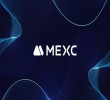7 November 2025
What Is A WhitePaper? - Understanding In Length
A whitepaper is the most important and key tool for any subject - it gives a better understanding, in-depth knowledge and insights of the project that the company aims to strive, achieve, objectifies, and works on and for. Be it the newbie or an experienced cryptocurrency user - studying the whitepaper of the project helps analyse and understand the core of the subject. Thus, it is of utter importance for the potential and the user to go through the company’s or project’s whitepaper before investing.
For instance, you are reading this blog to understand and learn more about whitepaper and its working. We are publishing this blog in the easiest way possible for you to understand, however with whitepaper - the content is in-depth along with insights, statistics and technicality.
The format and content of whitepaper vary from industry to industry and it can seem daunting at first but with precise time and understanding, it can work favours for the user.
In the world of cryptocurrency and blockchain technology, a whitepaper plays the most crucial role as it lists the background, aims, working, and every little details and information that we may miss out is all stated in a whitepaper.
In this blog, we are going to discuss and understand everything about the whitepaper in length:
What is Whitepaper?
A whitepaper is an authoritative report, a content piece or a theory that concisely describes an issue while presenting the project’s intended purpose and its working to achieve the solution, it can also be a report on a specific subject.
Basically, a whitepaper is a content piece that presents a problem and provides a solution. A whitepaper informs the reader, explaining in detail about what the project entails and tends to persuade based on its theory.
What is the need for a Whitepaper?
- For in-depth expertise, information, and insights
- A solution to a problem
- A new idea that also helps to level-up the game
- To educate the readers
- To attract new customers, create potentials and update existing users
- To record expertise and highlighting
Also Read, What Is An ICO?
How to write a Whitepaper?
Writing a whitepaper can be a task - and why wouldn’t it be? The writer needs to make sure that they don’t miss out even the tiniest details and it takes a hefty amount of time and R&D:
1. Topic: The topic of your content is the first step that gives a name to your content that you want to talk about and attracts the attention of the reader.
2. Understanding your audience: A unique content is that can connect to its audience. It is beneficial to consider the persona of your target audience while writing. This will help you to understand and realize the kind of information they need and expect, and it will help you to format your content accordingly. Establishing your audience base can help you to voice your content piece.
3. Research: Research plays an important role in content, after all whitepaper is informational in nature and needs comprehensive research work. A detailed research work forms the base of your content. It is important to conduct a thorough and in-depth research on the original and root of the subject matter. Analysing and studying unique case studies and statistics, researching on the content you intend to write, and learning related statistics is important, also reading other related relevant subjects that cover your topic can help you to learn, understand, determine, improvise and fill in the gaps for your whitepaper. The last but not the least - stay updated with the trends and developments.
4. Write: Whitepaper is elaborative and long. Writing in-depth information, details and insights using the technical jargons, writing that is easy to understand, adding graphs, charts, images, page layout, typography - fonts and colours helps your content look good and readable. Adding the table of content in your piece, helps the reader understand the content you have talked about and makes the user navigate your whitepaper. Including the aim, viability, utility, prototype and credibility are the important factors. Persuasive writing is a key element as it intends to convince your readers to believe in your theory and take the action. A good whitepaper must contain the following elements - length of the content piece, writing format and structure, density and >
Remember the formula -
SMART
S - Specific
M - Measurable
A - Achievable
R - Relevant
T - Time bound
5. Outline: Whitepapers consist of long format so sketching out your content material will help you organize your content material through an outline. Such as - Introduction, synopsis, overview, problem statement, background, solution, product description, body, and conclusion. Wrapping up your content with a inquisitive and enticing intro and a compelling outro.
6. Organize your draft, edit, proofread and follow up.
7. Other tips: Always keep a pen and paper near! Great ideas come when you least expect them - so always keep a pen and paper handy as even a little hint of an idea can change the direction of your piece. Mind mapping will help you to catalog and connect the aspects and pieces giving an overview.
Also, get feedback - the more the merrier - but choose the people wisely.
8. Human touch: This means that you talk about the team - the background behind the project that you are so exclusively talking about. The team plays an integral role in the project and gives a human touch to the otherwise technical description of the project.
A whiteppaer should look like a journey that flows in sequence format for better and easy understanding.
What to avoid while writing a Whitepaper?
- Do not make it sound like - sale pitch
- Lack of adequate research
- Poorly designed
- Poorly formatted
- Poor flow of content or story telling
- Do not make it too abstract or consisting of unrealistic roadmap
- Incorrect grammar, sentence formation, exaggeration or extraneous information or jargons.
Also Read, The 5 known Universities for Blockchain Technology
What to look for in a Whitepaper?
These are the few things you can ask yourself while reading and studying the whitepaper:
- The idea and the concept behind the project: Does the problem stated by the project need that kind of emphasis? Do we really need a solution to the problem stated? Are the problem and the solution really that fundamental and may help change the growth upwards?
- The solution to the problem: Reading and understanding the team’s plan and solution method or steps for the problem. Diligence learning about the company or project that is facilitating the content and its solution. What solution does the project offer for the problem?
- Execution: Can the team or the project really execute the idea they intend to offer? And how will they execute?
- Understanding the subject: Does the Blockchain project or the cryptocurrency need it? Is it viable?
- Basically what does the project do, how does it work, and do we need this?
How to read a Whitepaper?
- Abstract: The abstract of the whitepaper is to receive an overview about the project and give a hint of what the project and the content is going to be about.
- Introduction: The introduction of the whitepaper states the overall concept and context about blockchain or cryptocurrency and introduces the reader on how the project strives or aims to initiate.
- Problem Definition: This part of the content states the challenges and problems that are currently faced in the industry or the market and may also include the present solutions but how they are not enough to reach the point.
- Product Description:This part of the content states the description of the product or service, its functions and the measures the product or service will take in execution of the solution to the before-mentioned problem. It will consist of the key highlights of the project.
- Details: This part of the content will consist of the project’s technical details, analysis, specifications, development, benefits, management, productivity and so forth.
- Crowdsale Details: This part of the content includes launch dates, bonus schemes, target audience, potentials, project’s roadmap and so forth.
- Team Presentation: The team presentation of the whitepaper involves information about the project’s founding members, and lead developers. This helps the reader to understand the backbone of the project and understand the people involved in the team to create the project.
- Conclusion: This part of the whitepaper is the ending of the content that summarizes with the project’s key points and an outro.
Examples of few Whitepapers
- Bitcoin - https://bitcoin.org/en/bitcoin-paper
- Ethereum - https://ethereum.org/en/whitepaper/
- CryptoKitties - https://drive.google.com/file/d/1soo-eAaJHzhw_XhFGMJp3VNcQoM43byS/view
- Uniswap - https://uniswap.org/whitepaper.pdf
Studying the whitepaper - is worth the effort. As in the end, it only helps you to have a better understanding of the project than reading elsewhere, also if the project's whitepaper didn’t do much to you, it still is an achievement as you will be able to expose yourself to new ideas and or gain new insights, and information.






